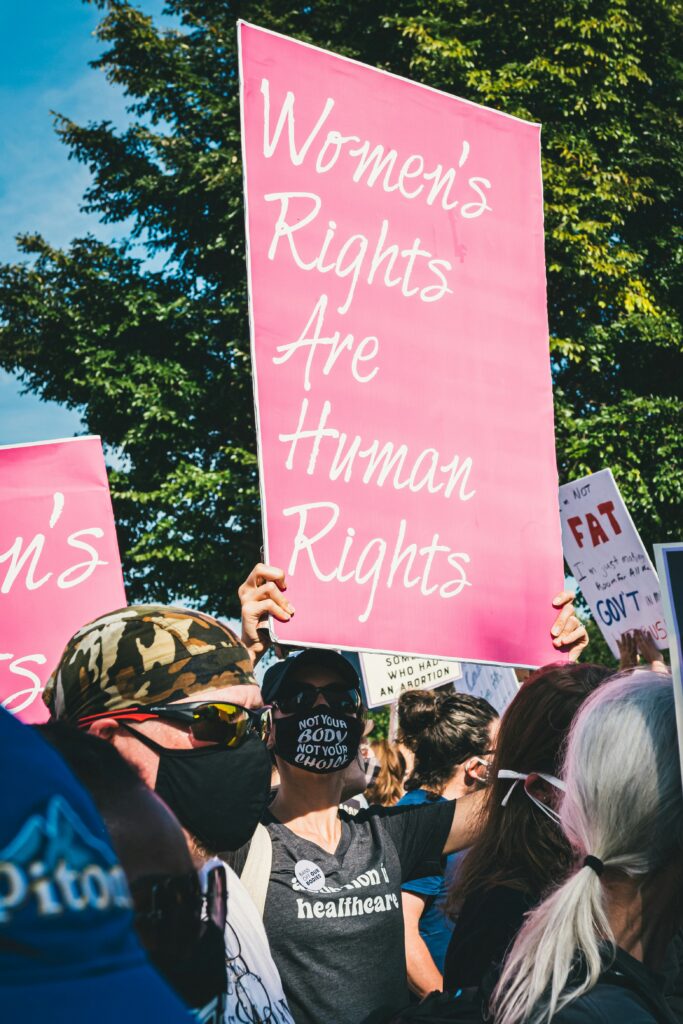
Female reproductive health is an important yet ignored aspect of the healthcare system. We may have come a long way over the past few years. However, women’s right to autonomy, medical consent, and access are still significant challenges. Millions of women are yet to receive the legal protections they deserve and remain unable to make medical decisions on their own. Instead, they are forced to navigate cultural, social, and financial barriers that restrict them from making these choices.
Inaccessibility to reproductive healthcare leads to severe consequences when treatments are delayed. Some of these complications include higher maternal mortality rates and conditions like obstetric fistula. Organizations like the Fistula Care Initiative (FCI) are dedicated to bridging the gap for women in this regard.
In this article, we will examine the issue of medical consent for women, autonomy, financial dependence, and the urgent need for accessible healthcare services. We will also highlight the importance of non-profit organizations like FCI.
Barriers to Accessible Reproductive Healthcare
We may have made progress in fighting for women’s rights. However, many women compromise their health and well-being. Some of these barriers include but are not limited to:
- Medical consent
- Legal restrictions
- Financial dependence
The Issue of Medical Consent in Female Reproductive Healthcare

Medical consent is a basic medical principle and a primary part of patient safety. It is also a fundamental human right, so decisions should be private and autonomous. The healthcare provider should provide enough information about the procedure before a patient can decide. Guardian consent is usually necessary when the patient is a minor or incapacitated. Only then is a family member—a parent, spouse, or next of kin — saddled with this responsibility.
Legal & Cultural Restrictions
In many healthcare systems, women are legally required to obtain spousal or parental consent before undergoing medical procedures. Even when they can make this decision on their own, many women have been denied full autonomy. It does not help that cultural, religious, and societal beliefs further justify these policies.
The cultural precedence in Nigeria and other parts of Africa is that a woman’s husband or father has the right to control her reproductive health. This mindset encourages policies limiting women’s rights to make independent health decisions. Sadly, unmarried women are left to a similar fate as they also require a guardian’s approval. As a result, women cannot access medical procedures such as:
- Caesarean section and other Obstetric surgeries
- Tubal ligations, IUDs, and other forms of birth control methods or contraceptive
- Termination of pregnancy (abortion), even in cases of medical emergencies
“Every individual has the right to make decisions concerning their reproductive health without coercion, discrimination, or violence.”
– The World Health Organization (WHO)
This clause automatically covers women. If we expect a woman to obtain permission from a guardian, then we are implying that her autonomy is secondary.
Legal restrictions on medical consent potentially threaten medical ethics, public health, and human rights. These restrictions not only violate women’s autonomy but also increase the risks of health complications.
Financial Dependence and a Woman’s Autonomy
Beyond the issue of consent, financial dependence on spouses or family members is another challenge. The WHO cites finances as one of the factors affecting access to female reproductive health.
Many women in low-income households lack the economic power to make health decisions without their husband’s or family’s approval. They are willing to delay or even forego life-saving treatments because their financial resources are controlled by their spouse or extended family. If her husband doesn’t consider this a financial priority or has more pressing priorities, he may refuse to give her the support she needs.
Here are some ways financial limitations affect women:
- Delivery choices:
Vaginal deliveries range between ₦50,000 and ₦100,000; and ₦150,000 to ₦500,000 in public and private hospitals, respectively. The cost of vaginal delivery is significantly higher in the private hospital than in the public hospital. This suggests the average woman can not have her children in well-equipped private hospitals.
The cost of Caesarean sections (C-sections) typically includes surgical fees, hospital stays, and potential complications. A Caesarean section costs between ₦100,000 and ₦200,000 in public hospitals. On the other hand, it costs between ₦300,000 and ₦1,500,000 in private hospitals. From a general cost analysis, it is clear that the cost of a Caesarean section is more than two times higher than the cost of vaginal delivery. Considering that the cost of CS may be too much for an average Nigerian family, women are more inclined to choose vaginal delivery. While a CS is more expensive, the high risk of vaginal delivery increases the fatality rates, which is more important than monetary value.
- Surgical removal of fibroids (myomectomy):
Statistics show that about 70-80% of black women have fibroids. Black women are also 3-4 times more likely to have fibroids than women from other races. Other treatment options exist in well-developed countries like the US and Japan despite the cost. For women in Nigeria, the struggle is twice as hard. Recent findings by Nairametrics show that surgeries like myomectomy cost as much as N700,000 and N1.5 million in public hospitals. Depending on the complexity and hospital location, it can cost N2.5 million or more in private hospitals. Even when women can afford it, the surgery is done under poor conditions that can jeopardise their safety and has negative consequences.
- Cancer treatment:
Cancer treatment is quite expensive and takes a financial toll. The burden of costs makes patients skip necessary diagnostic tests or treatments. About 47% of women below 40 with breast cancer had financial difficulties after a diagnosis and treatments despite having health insurance. About 28% of breast cancer patients reported that treatment costs influenced their decisions to have surgery or not. Women who earned a decent income chose to save the money instead of keeping their breasts or worrying about how they looked.
It is also important to note that financial abuse occurs in 98% of domestic violence cases. It is also a significant reason why victims choose to stay or return to their abusers. Access to financial resources is a tool wielded for dominance in abusive relationships. Such women in such relationships are uninsured and cannot afford routine tests and examinations.
Other Barriers to Accessible Reproductive Healthcare
These include:
- High cost of healthcare:
Many women cannot afford essential healthcare services like routine tests and screenings. Complex treatments for conditions like obstetric fistula, endometriosis, fibroids, and cancer cost more than the average woman can afford. Insufficient health insurance coverage also increases the weight of the financial strain.
- Limited access to basic healthcare facilities:
Distance makes healthcare a luxury, and it has several implications. Rural areas have few hospitals and clinics that provide maternal and reproductive care. Women in these areas must travel long distances to reach the nearest healthcare facility. As a result, routine prenatal care is very challenging. Emergency obstetric care is almost inaccessible. Regular diagnostic screenings are often skipped. The supply of contraceptives may be inconsistent or unavailable.
- Social and Cultural Stigma:
Reproductive and sexual health rights are a cultural taboo in traditional African societies. Discussions around this topic are considered to be unnecessary. The primary factor influencing misconceptions about fertility and contraception is misinformation. The knowledge gaps make it harder for women to seek care even when available. The shame associated with reproductive healthcare also makes these women isolate themselves.
The Consequences of Poor Female Reproductive Health
Access to reproductive healthcare is essential for women’s health and well-being. However, inadequate services can lead to severe consequences. Some of these include:
- Increased maternal mortality rates:
Delay or denied access to healthcare is a leading cause of maternal death in Nigeria and other developing nations. Even in emergencies, a pregnant woman who needs a C-section may be forced to go through a dangerous vaginal birth because her spouse refused to give his consent. Prolonged labour without proper medical intervention is life-threatening and can lead to complications. Some of these complications include haemorrhage, eclampsia, infection, etc.
- Higher cases of unplanned pregnancies and unsafe abortions:
Restricted access will lead women to seek dangerous alternatives. The absence of family planning services will increase the number of unwanted pregnancies. These pregnancies may be high-risk and detrimental to a woman’s health and well-being. Such women are at a high risk of having unsafe abortions under unhygienic conditions. Unsafe abortions can result in serious complications, including infertility, infection, and even death.
Poor female reproductive health also increases the prevalence of sexually transmitted infections (STIs) and obstetric fistula. Women are more likely to contract STIs due to the lack of sexual health education and treatments. Little to no access to emergency obstetric procedures increases the risk of obstetric fistula. Addressing these healthcare gaps can reduce the incidence of such preventable illnesses.
The Fistula Care Initiative (FCI)
Vesicovaginal fistula (VVF) is an abnormal opening between the bladder and the vagina that triggers the continuous leakage of urine, faeces, or sometimes both. It is a complication caused by prolonged, obstructed labor. Without prompt medical care, VVF causes physical discomfort, social stigma, and psychological distress.
The Fistula Care Initiative (FCI) is leading the fight for female reproductive health. FCI, founded by Nkasike Gbana Abu, focuses on raising awareness about obstetric fistula, funding repair surgeries, and supporting affected women. Their mission shows what community-driven healthcare can achieve by:
- Providing financial support for women with obstetric fistula who need surgical intervention
- Offering rehabilitation by reintegrating VVF survivors into society
- Empowering these women towards financial freedom.
- Educating communities about maternal health
- Reducing the prevalence of VVF and improving the lives of several women
Advocating for Change in Female Reproductive Healthcare
FCI needs funding and public awareness campaigns to expand its impact. Every contribution can extend the reach of these vital services. You can support them by:
- Making financial donations to amplify their reach
- Advocacy support to amplify the voices of affected women
- Volunteering your time and professional expertise
- Supporting other healthcare initiatives, especially those geared towards female reproductive health
The Need for Policy Reform

Policies that protect women’s right to medical decisions are due for a comprehensive review. To protect female reproductive health, governments and policymakers must adopt reforms that include:
- Legal protections that establish women’s right to medical consent without third-party approval.
- Subsidized health services to ensure women access healthcare, regardless of their economic status.
- Maternal health initiatives will educate women about their legal rights and reproductive education.
- Legal protections against gender-based medical discrimination by healthcare providers
Women’s reproductive autonomy is a fundamental component of public health. When women can make decisions about their health, our communities are preserved.
We all have a role in bringing about the change we desire, and the best time to act is now.
Share this article and join the fight for women’s reproductive rights!
Sources and References
- Nepal A, Dangol SK, Karki S, Shrestha N. Factors that determine women’s autonomy to make decisions about sexual and reproductive health and rights in Nepal: A cross-sectional study. PLOS Global Public Health. 2023;3(1):e0000832.
- Femnet. Factsheet: Sexual reproductive health and rights at a glance – Nigeria. FEMNET.
- Shah P, Thornton I, Kopitnik NL, Hipskind JE. Informed consent. In: StatPearls. StatPearls Publishing; 2025.
- Entwistle VA, Carter SM, Cribb A, McCaffery K. Supporting patient autonomy: the importance of clinician-patient relationships. Journal of General Internal Medicine. 2010;25(7):741.
- Balushi AAA. Female patients and informed consent: Oman’s cultural background. Sultan Qaboos University Medical Journal. 2019;19(1):e11.
- United Nations (UN). Rights to sexual and reproductive health.
- World Health Organization (WHO). Sexual and reproductive health and rights.
- Stover J, Hardee K, Ganatra B, García Moreno C, Horton S. Interventions to improve reproductive health. In: Black RE, Laxminarayan R, Temmerman M, Walker N, eds. Reproductive, Maternal, Newborn, and Child Health: Disease Control Priorities, Third Edition (Volume 2). The International Bank for Reconstruction and Development / The World Bank; 2016.
- Graboyes EM, Chaiyachati KH, Gall JS, et al. Addressing transportation insecurity among patients with cancer. JNCI Journal of the National Cancer Institute. 2022;114(12):1593.
- Finlayson K, Downe S. Why do women not use antenatal services in low- and middle-income countries? A meta-synthesis of qualitative studies. PLoS Medicine. 2013;10(1):e1001373.
- Care I of M (US) C to SO for P, Brown SS. Women’s Perceptions of Barriers to Care. National Academies Press (US); 1988.
- Konlan KD, Baku EK, Japiong M, Konlan KD, Amoah RM. Reasons for women’s choice of elective caesarian section in Duayaw Nkwanta Hospital. Journal of Pregnancy. 2019;2019:2320743.
- Marcil LE, Campbell JI, Silva KE, et al. Women’s experiences of the effect of financial strain on parenting and mental health. Journal of obstetric, gynecologic, and neonatal nursing : JOGNN. 2020;49(6):581.
- Shippee TP, Wilkinson LR, Ferraro KF. Accumulated financial strain and women’s health over three decades. The Journals of Gerontology Series B: Psychological Sciences and Social Sciences. 2012;67(5):585.
- Ezeh A, Bankole A, Cleland J, García-Moreno C, Temmerman M, Ziraba AK. The burden of reproductive ill health. In: Black RE, Laxminarayan R, Temmerman M, Walker N, eds. Reproductive, Maternal, Newborn, and Child Health: Disease Control Priorities, Third Edition (Volume 2). The International Bank for Reconstruction and Development / The World Bank; 2016.
- Igboeli P, Walker W, McHugh A, Sultan A, Al-Hendy A. Burden of uterine fibroids: an African perspective, a call for action and opportunity for intervention. Current opinion in gynecology and obstetrics. 2019;2(1):287.
- Al-Hendy A, Myers ER, Stewart E. Uterine fibroids: burden and unmet medical need. Seminars in Reproductive Medicine. 2017;35(6):473.
- Stamatakos M, Sargedi C, Stasinou T, Kontzoglou K. Vesicovaginal fistula: diagnosis and management. The Indian Journal of Surgery. 2012;76(2):131.
- Fistula Care Initiative.
